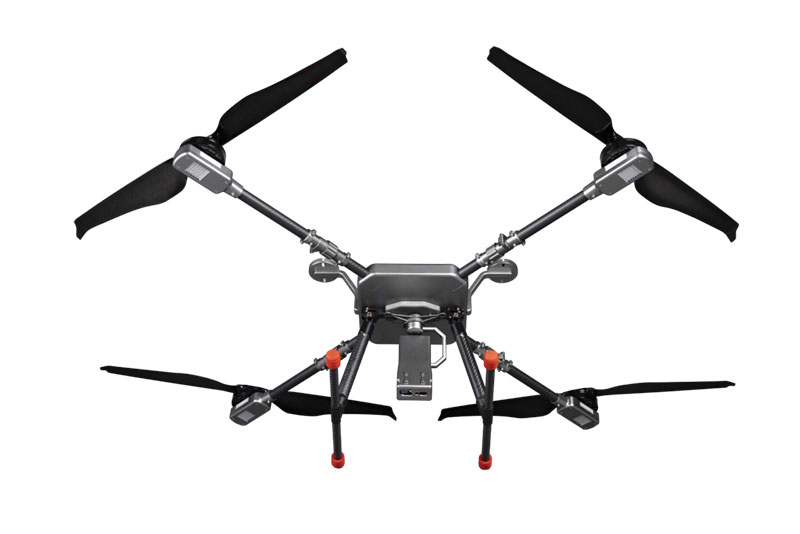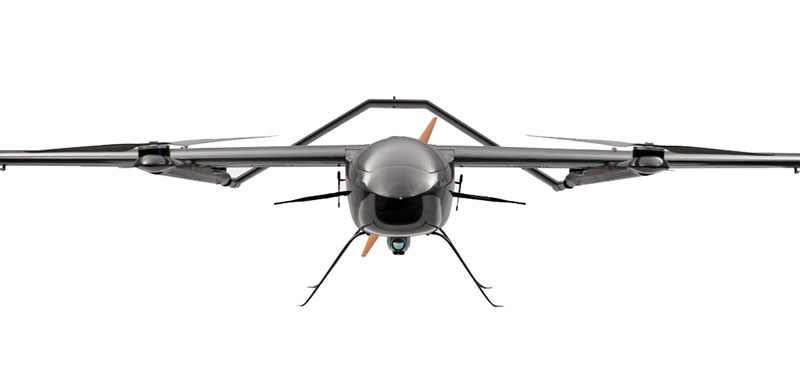October 2020, Vol. 247, No. 10
Features
Transforming Pipeline Monitoring with AI, Drone Technology
By Gideon Gerber, Airborne Drones
Comparable to the introduction of electricity, which transformed industries in the 1800s, artificial intelligence (AI) has already transformed society, creating massive change and huge economic value.
The oil and gas industry, pipeline monitoring in particular, is also deriving great benefit from the implementation of both drone technology and AI.
AI can generate insight without human intervention, or limitations, by learning from masses of data which are processed at astronomical speeds. The more data, the more powerful the insights. AI finds out what works, and then amplifies this exponentially.
Drones, for example, overcome traditional pipeline monitoring limitations by taking powerful, multisensor payloads very close to the pipeline and generating higher volumes of much richer data in terms of context and resolution, increasing the amount of data for AI engines to process, providing a much better result.
Pipeline Infrastructure
Oil pipelines are vast infrastructures, often in difficult terrain moving through marshlands, hot desserts, frozen landscapes or even in areas of conflict, exposing both people and equipment to these extreme conditions.
Pipelines get monitored against various parameters, such as pipeline pressure and temperature, diameter of a pipeline rupture, layout of pipelines and type of transported fluid, etc.
The ability to remotely perform many maintenance tasks is a huge benefit to this capital-intensive industry, being among the most complex of industries having to deal with stringent guidelines regarding safety, health and the environment.
Pipeline operators must carry out regular inspections of their equipment to ensure it is in safe working order. An overview of traditional methods follows:
Inspection by physical patrols is constrained to predetermined routes based on statistical sampling, leaving certain pipeline areas uninspected. It is also difficult to detect leaks visually or by smell, and human inspections are often limited when it comes to heights or confined spaces, as well as difficult-to-reach or dangerous places.
With the pressure control method, it is difficult to detect small leaks or locate leaks, and it is subject to false alarms and more delays the longer the pipeline. It is also less effective for pipelines more than 60 miles (100 km).
Ultrasonic flowmeters are expensive. It is also difficult to detect small leaks or locate leaks, and it is subject to false alarms and more delays the longer the pipeline. It is also less effective for pipelines with longer routes.
With conductive cables, small leaks are difficult to detect and locate. It is also expensive and subject to false alarms.
Helicopters or planes fly higher and quicker and can carry heavy and expensive monitoring equipment but still provide comparatively low-resolution images for the same money, including the cost of a pilot.
Earth remote sensing data (via satellites) provide low-resolution images.
Common to many of these methods are the following challenges:
False Alarms – Often, traditional systems generate false alarms and nothing significant, which can lead to alarm fatigue, where people do not respond. The problem is that when something happens with the transportation of dangerous fluids, it can be very serious with catastrophic consequences.
Threshold-based Alarms – Another major challenge with threshold-based alarm systems is that reporting exceptions tend to happen after the fact and with limited insight into the cause.
UAV-Based Monitoring
Different high-quality sensors aboard unmanned aerial vehicles (UAVs) allow simultaneous, close-up inspection of pipelines with respect to different criteria.
UAV’s light weight provides for continuous scanning providing maximum safety at the same time. UAVs ensure scanning of a pipeline at long distances and in hard-to-reach areas.
UAVs can routinely fly closer to the ground at night, follow a very precise flight path, have lower operational costs and are more environmentally friendly. This direct observation method yields more accurate results without delays.
It is important for an effective pipeline monitoring strategy to take into account the type of inspection data, the various inspection methods used and the types of UAV platforms.
Types of Data
The value of data, especially for AI applications, is emphasized by the phrase: “Data is the new oil!” A variety of rich data sources can be used to monitor various aspects of long-distance pipeline infrastructures:
- High-resolution color imagery can be used to identify damage to pipeline and vegetation that might be affecting pipelines.
- Multispectral imagery to monitor pipeline right-of-way can be used in the agricultural space to detect plant health; conversely, it also can be used to see the effect of a pipeline on the ecosystem and identify gas leaks, occupying and damaging vegetation.
- The Lidar method can be used to create a 3-D digital model. Due to the high accuracy of Lidar models, 3-D models (digital twins) can be made of the pipeline and its relation to the first digital model of when the pipeline was installed, to work out where the pipeline has shifted after time. It is possible to predict damage and modify pipelines to preempt damage that can occur.
- Thermal models can be used to identify possible defects. Using general wave cameras with RGB imagery and thermal overlay you can predict weaknesses in pipes and possible leaks. Inspection teams can then be sent to measure if there is an actual leak or a bigger heat-shift reflecting structural failure.
Inspection Methods
A variety of inspection methods are available to acquire the various data sources.
Digital Photogrammetry – This allows identifying faults in earth morphology through the analysis of chromatic variation of relief changes using specialized tolls tools and software. The result is the KMZ file or geo-information file intended to control map data when identifying the location of detected changes. This method can be applied to monitor hydrocarbon pipelines laid above- and underground.
Spectrometric Method – Two types of sensors are used to detect and identify hydrocarbon leaks in a liquid or gaseous state: multispectral and hyperspectral.
Geothermal Surveying Method – Thermal imaging cameras make it possible to analyze the tendencies of the remote infrared (IR) spectrum. It is also possible to identify hydrocarbon gases interacting with the IR spectrum.
UAV Platforms
Different UAV (drone) platforms are available for deployment depending on the requirements.
Quadcopters (or multirotors) make it possible to obtain maximum details for medium and small areas to ensure detailed scanning of subsurface pipelines. Quadcopters, like the ATLAS-T, can bring powerful sensors very close to the point of interest for high-resolution detail.
Fixed wings can meet larger area monitoring requirements but provide lower resolution and fewer details. A further refinement of UAV options is a VTOL (vertical takeoff and landing) fixed wing, like the ATLAS-V, which combines the strengths of both fixed wing and multirotor UAVs.
Emerging Technologies
Technology changes at a rapid pace. Recently, there have been exciting advances with more sensitive methane detection sensors on UAV platforms that can get closer to the sources of pipeline gas leaks. Oil and gas operators have been able to digitize several aspects of their value chain with a variety of emerging technologies.
Using AI’s pattern recognition to differentiate the different vibrations can create a multidimensional vibration pattern of different events on the pipeline.
Using AI on the edge for pipelines, the algorithm can detect granular differences between different types of impacts and can detect with high confidence the majority of the incidents for immediate action.
Using several technologies, like embedding the sensor, storage, processing and advanced artificial intelligence (machine learning), intelligence will move toward the edge of various endpoint devices installed in oil and gas companies. Incidents can be detected and localized.
These technologies connected through 5G networks, along with technologies such as the Internet of Things (IoT), cloud computing and robotics, are digitally transforming the industry.
Drones
Drones, capable of integrating various payloads, sensors and imaging technologies, effectively carry out operations like important methane gas leak detections, as well as corridor mapping, emergency response and recovery.
Closed-circuit television (CCTV) cameras, when integrated with AI, enable more advanced solutions like face recognition, object recognition, event recognition, intelligent image processing, remote asset management, behavioral detection and analytics.
AI allows the use of image analytics to monitor any deformation from the baseline profile of the infrastructure. The real-time visibility of infrastructure integrity ensures safe operations, while also reducing the cost and human errors in meter reading.
At its simplest level a digital twin is a concept whereby a digital replica of a physical facility is developed and can be a digital proxy of the physical world.
Integrated Solutions
Leakage detection represents the most critical element of the inspection and detection for preventing major accidents as well as avoiding malfunction of equipment. Integrating various sources of sensor and systems data technologies are proving to be the most effective.
Multisensor data integration allows modeling of vital equipment, such as flowmeters and valves using AI, as well as ensuring that detection is validated with more than one type of data. For example, in an oil pipeline, you would want to analyze the flow and mitigate corrosion, as well as identify and pinpoint potential leaks.
By using both AI and edge computing, central operations can be alerted to potential issues such as leaks, corrosion, freezing damage or vandalism. It also allows operators to capture and analyze remote operations through image analytics. Above all, it adds intelligence by predicting and optimizing pipeline maintenance and integrity.
A digital twin of a physical plant or asset can be used to optimize various processes before implementation on the physical asset to adjust facility designs. Different sensor types and devices may be integrated with the software to build digital profiles, which are then used to predict and optimize pipeline maintenance and integrity.
In this regard, sensors are deployed that are capable of collecting information about unwanted gas leaks to avoid losses of human life as well as other infrastructures. These sensors are not only capable of generating alerts but also providing information to actuators to act automatically to stop the leakage and mitigate the consequences.
Author: Gideon Gerber has held senior IT executive roles in a variety of vertical industries.







Comments